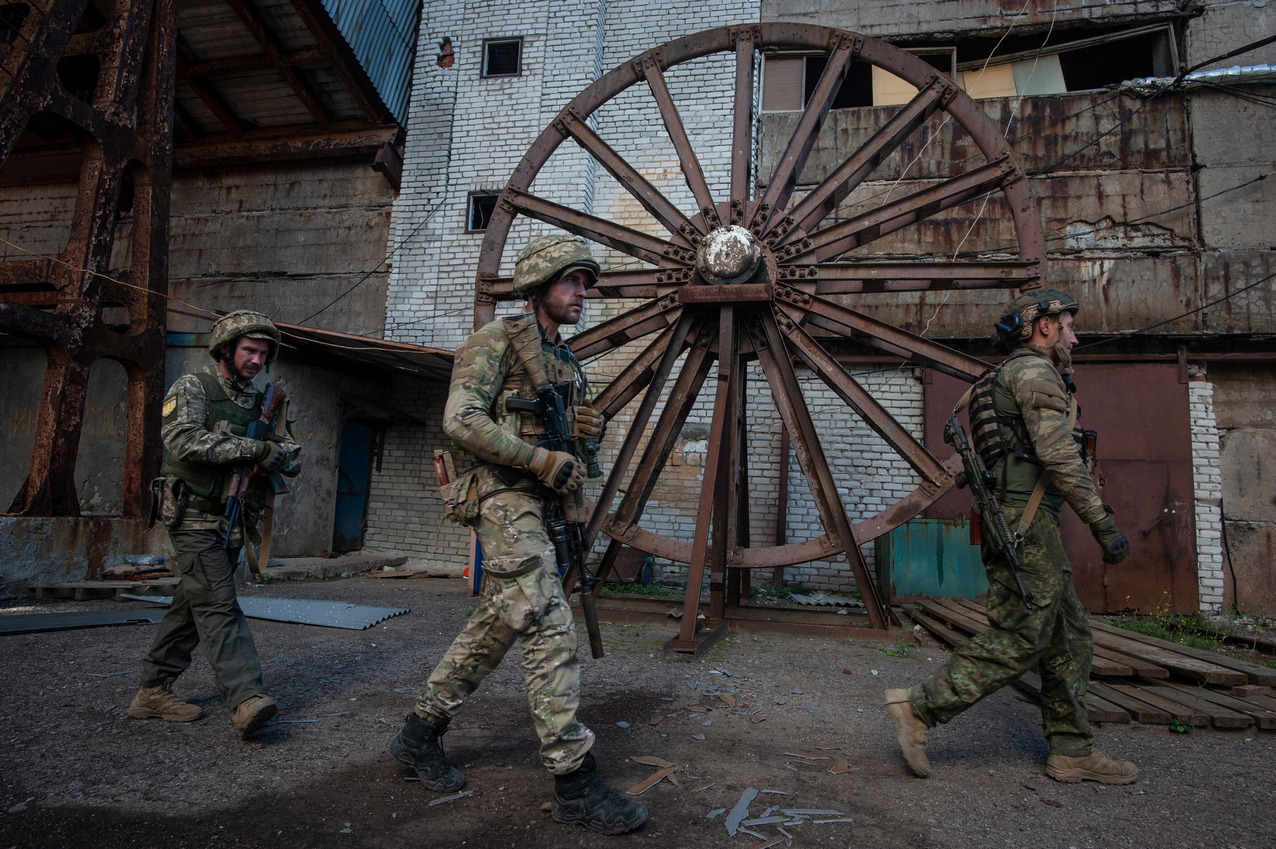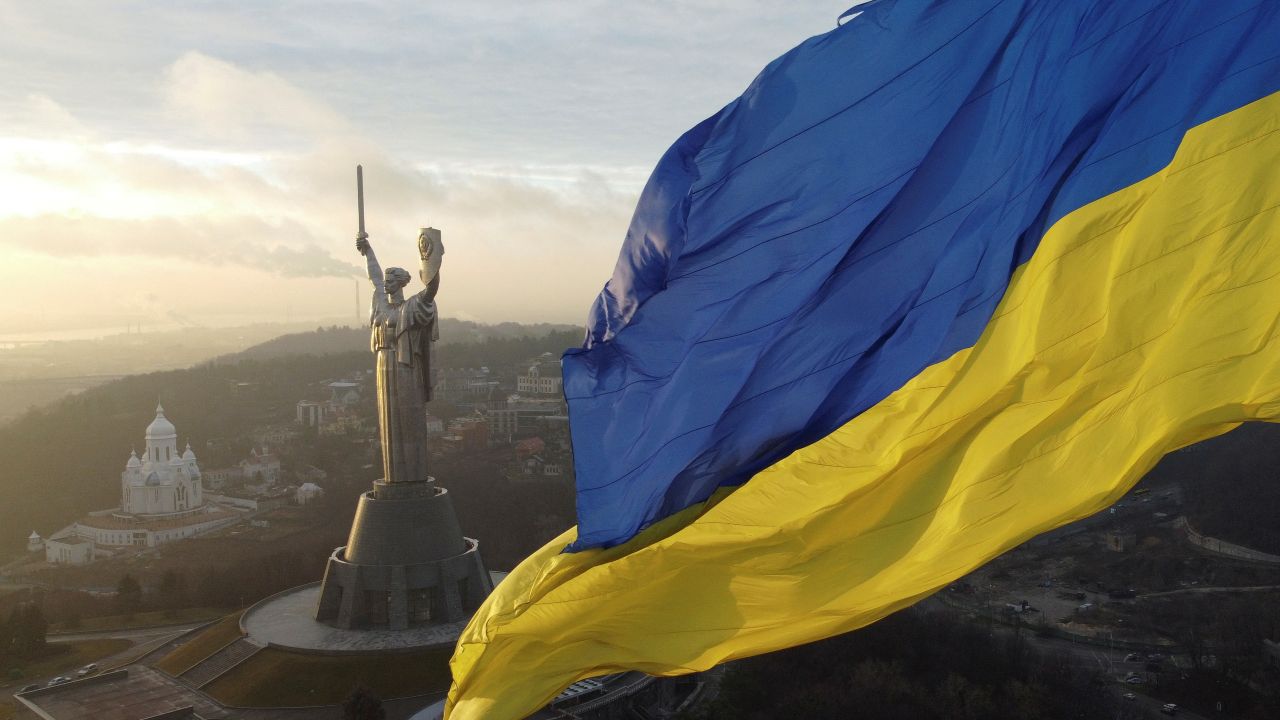Overview
When Russia’s full-scale invasion of Ukraine began, the seven featured regions were in distinct situations:
- Crimea had been illegally annexed by Russia for eight years.
- Parts of Luhansk and Donetsk oblasts were already occupied by Russian forces, and Vladimir Putin had just announced their independence as so-called people’s republics.
- Kharkiv Oblast was under attack for the second time, eight years after a group of Russian-backed separatists had unsuccessfully attempted to establish a Kharkiv People’s Republic.
- Kherson, Mykolaiv, and Zaporizhzhia oblasts were facing full-scale Russian aggression for the first time.
In each of the seven territories, Moscow’s invasion brought massive human suffering and high levels of damage to property and critical infrastructure. It will take years to demine and rebuild.
The Armed Forces of Ukraine regained control of the territory of Kharkiv Oblast in September, after a fierce battle for the region, and pushed Russia back on other fronts. In the areas that remain under occupation, resistance movements are continuing to undermine Moscow’s forces.
In the partially occupied territories of Kherson and Zaporizhzhia oblasts, Russian troops are ignoring international humanitarian laws and actively suppressing the local population through “assimilation policies” intended to eliminate their Ukrainian identity. In doing so, the occupiers are following the same playbook as in Donetsk and Luhansk oblasts and Crimea.
Liberating Ukraine from Russian control and rebuilding and restoring services are the main priorities this year for all the representatives of the affected regions.
Crimea
Before February 2022: Invaded and illegally annexed in 2014.
Current status: Used as a military base to attack the mainland. The people of the peninsula are being mobilized to fight in Moscow’s war against Ukraine.
Source: Tamila Tasheva, Permanent Representative of the President of Ukraine in the Autonomous Republic of Crimea.
The full-scale invasion sparked increased repression of activists, journalists, Crimean Tatars, and ethnic Ukrainians in occupied Crimea, but the resistance movement on the peninsula has also intensified, Tasheva said.
“We can definitely see it in the number of new administrative or criminal cases on the peninsula against people who say, “no war,” “stop the war” or “glory to the Armed Forces of Ukraine,”” she said. “People began taking action after realizing an opportunity is approaching for Ukraine to regain control of Crimea.”
Since Russia tightened censorship following the invasion, the occupation authorities have opened about 250 cases in Crimea for “discrediting the Russian army” and “fake news.”
Protests in Crimea have also focused on defending the Ukrainian identity from Russian attempts to suppress it. Charges have been brought against people for singing Ukrainian songs and using the Ukrainian language.
“Bohdan Ziza, an activist, was arrested for pouring yellow and blue paint, and [throwing a bottle] of incendiary mixture, on the occupation administration’s building in Yevpatoria; Oleksandr Toropon distributed leaflets against the war in Alushta and the Alushta district; Andrii Bilozerov, a former school teacher, was arrested for watching a video with students that featured a Ukrainian song and Turkish-made Bayraktar drones,” Tasheva said. “Someone is detained for singing Ukrainian songs at weddings, someone is detained for writing “Glory to the Armed Forces of Ukraine,” which is viewed as a Ukrainian protest. Before that, it was more of a human rights protest.”
According to Tasheva, the last year has brought renewed hope that Crimea can be liberated.
“Before the full-scale invasion, everyone understood that regaining control over Crimea would take time, that Ukraine was taking certain actions aimed at de-occupation, but this was not going to be a fast process,” she said. “After the beginning of the invasion, even though there were a lot of losses for our country, people began to realize Ukraine could regain control over Crimea much faster.”
For Tasheva, the main priority for 2023 is to work on the liberation of Crimea and prepare for the reintegration of the peninsula back into Ukraine. The lessons of 2014 must be learned, and Russia held accountable for its aggression, she said.
“The whole world ignored what happened in 2014 with the occupation of Crimea. Everyone expressed concern, sanctions, and restrictions were introduced against Russia, but there were no actions aimed at stopping Russia’s aggression,” Tasheva said. “We understood that sooner or later Russia would attack again.”
“We have to liberate the territory of Crimea, because without it there will be no security in the entire region, and there will be no security for Ukraine. There will always be a repetition,” she said. “The Russians should leave Crimea because they use Crimea as a large military base, a bridgehead for an attack on the rest of our state.”
Donetsk Oblast
Before February 2022: Partial occupation after the 2014 military invasion. Russia had proclaimed the so-called Donetsk People’s Republic.
Current status: Part of Donetsk Oblast remains under Russian occupation, and there are active hostilities in other parts of the territory. People of the region are being mobilized to fight in the war against Ukraine.
Source: Pavlo Kyrylenko, head of the Donetsk Oblast Military Administration

In the invasion of Spring 2014, Russia took control of almost all of the Donetsk Oblast. In the summer of that year, the Ukrainian army conducted a successful counter-offensive and liberated the majority of the occupied territories. Before February 2022, a third of the region was under Russian occupation.
The Russian military is turning Ukrainian cities and towns into ruins, Kyrylenko said. “Scorched earth is not a figurative expression, but the literal description of what the invaders leave behind,” he told CEPA in answers provided by his press office. “Mariupol, Volnovakha, Vuhledar, Marinka, Bakhmut, Soledar, are all cities the Russians mercilessly razed to the ground, killing tens of thousands of local residents.”
Despite the rapid advance of the Russians last February, Ukrainian forces managed to defend a significant part of Donetsk Oblast, and about 45% remains under Ukraine’s control, Kyrylenko said.

“This is perhaps the main lesson that we all learned from last year: no matter how terrible the enemy seems, with joint efforts we can stop them,” he said. “And we are doing it - the experience of the Lyman and Sviatohirsk hromadas (municipalities), which were under occupation in 2014 and 2022 and liberated both times, shows we are capable of driving the enemy from our land.”
“This is exactly what I would define as the main priorities for the region for this year as well: to stand firmly in defense and successfully go on the offensive,” Kyrylenko said.
Kharkiv Oblast
Before February 2022: Zero occupation.
Current status: 29 settlements are currently under Russian occupation after the vast majority of the oblast was liberated during Ukraine’s September offensive. Russian soldiers continue attacking liberated territories.
Source: Oleh Syniehubov, head of Kharkiv Oblast Military Administration
“At the beginning of 2022, of course, we had information from various sources about the high probability of a full-scale Russian invasion, including on the Kharkiv front,” Syniehubov said in comments provided by his press office. “At the same time, until the morning of February 24, we all hoped common sense would prevail among our neighbors.”
Immediately after the beginning of the invasion, Kharkiv authorities followed a pre-prepared plan, creating an operational headquarters and organizing their defense. “Thanks to the heroism and professionalism of our military and territorial defense forces, we stopped the advance of the enemy,” Syniehubov said. “Some of their groups managed to enter the city of Kharkiv, but not for long.”
In May, Ukraine’s Defense Forces repelled the occupiers from the northern front and pushed them to the Russian border. Then in September, the Ukrainian counter-offensive liberated almost the entire area from Russian forces. Twenty-nine settlements, less than 2% of the territory of Kharkiv Oblast, are currently under occupation, and Russian forces are continuing their attacks.
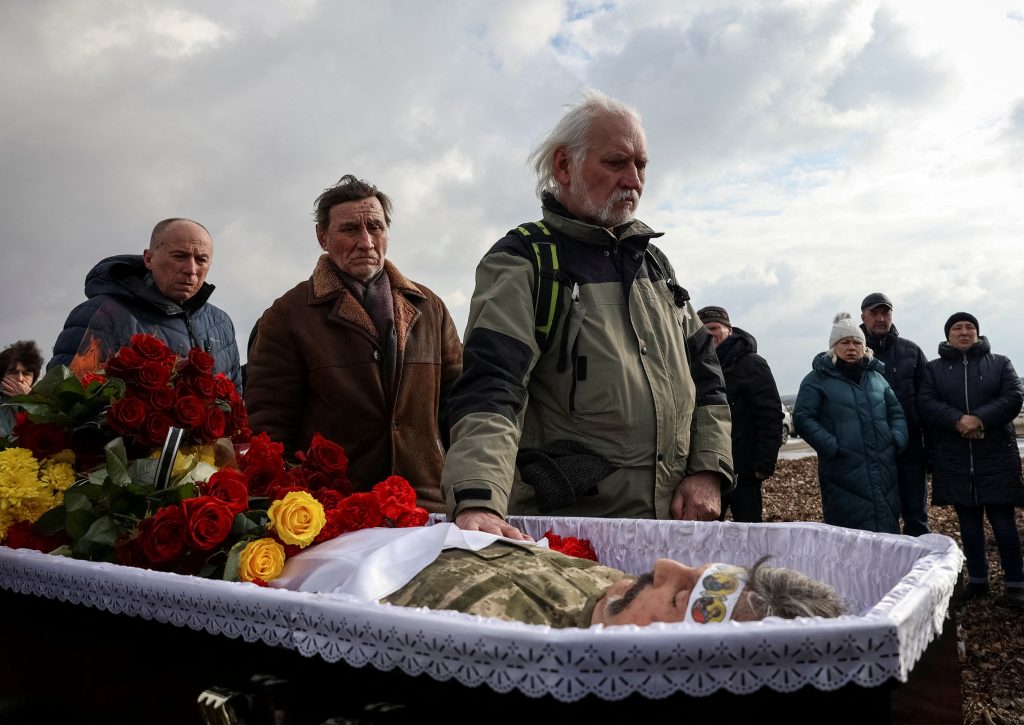

According to the latest data, almost 18,000 facilities have been damaged by Russian shelling, while more than 4,000 apartment buildings and 6,000 private houses have been ruined. More than 800 educational institutions, 270 healthcare institutions, and 350 cultural institutions have also either been destroyed or damaged.
“In the first months of the war, about 25% of the territory of Kharkiv Oblast was under occupation, and many settlements were under occupation for about half of the year,” Syniehubov said. “After the liberation, the whole world saw evidence of the crimes of the Russian army in the occupied territories of Ukraine. Now law enforcement officers will continue to conduct the exhumation of civilian burial sites in the de-occupied territories and collect evidence of their crimes.”
Investigations of graves in Izium have uncovered 447 bodies along with evidence of the torture and execution of civilians, including children, Syniehubov said.
The main priority for this year is to do everything possible to help the Armed Forces of Ukraine win victory over the occupiers, liberate the entire territory of Kharkiv Oblast, and liberate all of Ukraine, Syniehubov said. Only victory for Ukraine will give its citizens security, he said.
Kherson Oblast
Before February 2022: Zero occupation.
Current status: After part of Kherson Oblast was liberated in November, Moscow withdrew its troops to the east bank of the Dnipro River, from where they continued their attacks. In the occupied areas, Russian authorities suppress Ukrainian identity and mobilize citizens to fight against Ukraine.
Source: Yurii Sobolevskyi, First Deputy Head of Kherson Oblast Council
Russian forces moved very quickly in Kherson Oblast when the full-scale invasion began, attacking the south severely, Sobolevskyi said. The Armed Forces of Ukraine were outnumbered, and the geography of the region didn’t help — the territory is mostly flat, and there are no forests to aid the defense. Almost 90% of Kherson Oblast was occupied, and many people were killed, tortured, or injured.
“Civilians were simply shot in cars or at checkpoints at the beginning of the war. When families tried to leave with their child, they were shot,” he said. “There are many such cases and, even now, the police are still working and finding the bodies of people who were killed by the occupiers at the beginning of the war.”
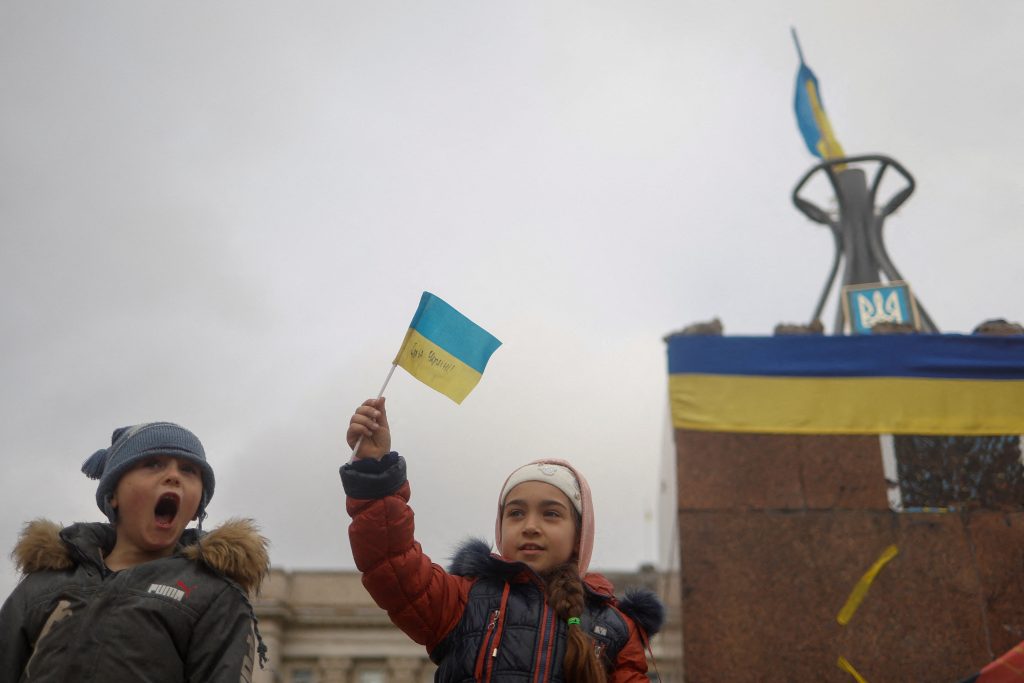
The occupiers were heavily influenced by Russian propaganda, Sobolevskyi said. When they tried to communicate with locals, they kept saying their fight was not with them. “They would say they wanted to overthrow ‘the criminal regime in Kyiv,’ and then together [with Ukrainians] go to war against Europe, NATO, and America,” he said.
Soldiers from the occupied territories of Luhansk and Donetsk oblasts, who have been living under Moscow’s rule, were at some of the checkpoints in Kherson Oblast and repeated Russian propaganda, he said.
“After that territory was occupied and a certain number of years had passed, they were so brainwashed that they actually took up arms and went to war against their own citizens,” Sobolevskyi said. And unless Russia is defeated, it won’t stop there. “Ukraine is protecting other European countries because Putin's goal is not Ukraine, he wants to take revenge on the collective West for the collapse of the Soviet Union. Their top officials broadcast it all, this is a rematch.”

The Russian forces in areas still under their control use the same playbook as in other territories to attack and suppress everything Ukrainian. Use of hryvnia, the Ukrainian currency, is almost treated as “extremism,” and parents who organize online schooling for their children in Ukrainian are punished with fines and threats by the Russian authorities, Sobolevskyi said.
“If the child does not go to the Russian school, they threaten to deprive the parents of parental rights. They say they will take the child away, outside Kherson Oblast to Crimea or the Russian Federation,” he said. “Forced 'passportization' is also very strong, because now it is very difficult for a person without Russian citizenship to survive since the Ukrainian financial system is completely blocked there.”
The main priority for this year is regaining control over all territories, including Crimea, he said.
Luhansk Oblast
Before February 2022: Invaded militarily in 2014, partial occupation under which Russia proclaimed the so-called Luhansk People’s Republic.
Current status: Part of the Luhansk Oblast remains under Russian occupation, with active hostilities in other parts of the territory, and people mobilized to fight against Ukraine.
Source: Serhii Haidai, head of Luhansk Oblast Military Administration
The war in Luhansk and Donetsk oblasts started in 2014, with hostilities in different phases. Until February 2022, 30% of Luhansk Oblast was occupied by the Russians, but after the February 24 invasion, the Ukrainian military withdrew to Kreminna, leaving Kyiv in control of just 30% of the region. The tactical retreat helped the defense of the rest of the nation, Haidai said.
“If we had not withdrawn… we would not have been able to hold the region,” he said. Luhansk has a 700 km (434m) border with the Russian Federation and “the fact we could hold defense for four-and-a-half months was a huge bonus for Donetsk Oblast in particular,” as well as other oblasts, as it allowed them to prepare defenses, he said. “We could hold a huge number of Russian soldiers, who then did not go to Kharkiv.”
The damage in Luhansk Oblast is devastating, and many settlements completely flattened, Haidai said as he ran through a litany of destruction in the region.
“In Sievierodonetsk, 90% of buildings are damaged, 70% of them cannot be repaired and must be demolished. In Rubizhne, 50% of the city doesn’t exist,” he said. “Popasna does not exist. Bilohorivka does not exist anymore. Nevske is now a liberated settlement, 50% of the houses were shelled, and 50% still survived. The next village is Makiivka, there is not a single house that survived. In Novoselivske, there is not a single house. Toshkivka - destroyed, Novotoshkivske - completely destroyed. It's a horror, they leave continuous ruins.”
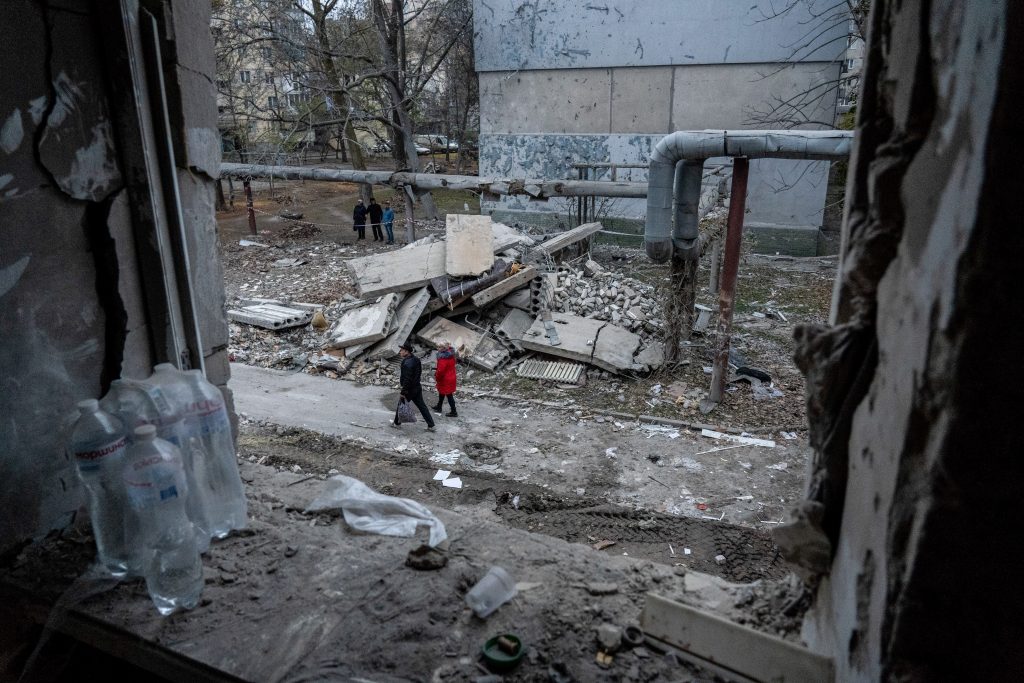
The war has also damaged or ruined critical infrastructure, including water supplies and other vital services, Haidai said.
“The closer the front line is, the worse the situation is, because the occupiers drive people out of their homes, settle their militants there, take people's property, and withdraw the hryvnia from circulation,” he said. Residents have turned to barter for food instead of using cash. “I give you something, and you give me a few kilograms of meat, this is how barter happens. There is a market in Starobilsk where such an exchange takes place,” he said.
Around 300,000 people have left Luhansk Oblast, approximately half the population that lived in the part of the region controlled by Ukraine before February 2022.
Haidai said it will take years to rebuild after the war. “Luhansk Oblast is the most mined territory of all regions of Ukraine,” he said. “If we want to lay a pipe of 100 kilometers, the entire route must first be demined… cities such as Sievierodonetsk, Lysychansk, and Rubizhne could be restored in seven years, probably not less.”
Everything will depend on how soon liberation from the Russian military is completed, and when Ukraine regains control over the whole of Luhansk Oblast, returning to the administrative borders of 1991, Haidai said.
Mykolaiv Oblast
Before February 2022: Zero occupation
Current status: Though the majority of settlements have been liberated from the occupiers, the Kinburn Spit, which controls access to the Black Sea, remains disputed, and two liberated hromadas are being shelled every day.
Source: Vitalii Kim, head of Mykolaiv Oblast Military Administration
At the beginning of the full-scale invasion, Russian soldiers occupied more than 100 settlements in the region, the majority of which have now been liberated by Ukrainian forces. There are three settlements on the Kinburn spit, which Ukraine’s military refers to as the “gray zone,” as there are still constant battles. The Ochakiv and Kutsurub hromadas, which are located just across the strait from the spit, continue to suffer in the ongoing fighting.
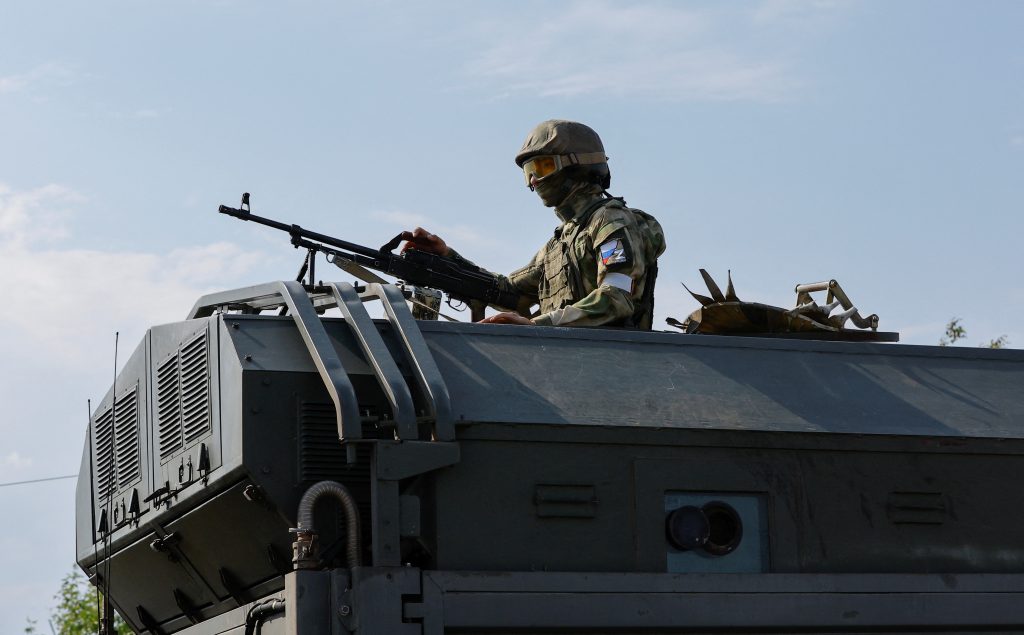
Civilians live on the spit, but it’s not possible to help them, Kim told CEPA. “The occupiers have cut off the route we had for humanitarian aid by sea,” he said. “Now it is impossible because they are shooting at all the ships, even civilian ones, that could help the residents.”
The war has brought significant human suffering and damage to the region. Since the invasion, more than 900 people have been injured and 482 killed, including 12 children, Kim said. Ten thousand private houses have been destroyed or damaged and 12 of the biggest agricultural enterprises ruined. “Children have missed almost a year of studying. They studied remotely, but that's not sufficient,” he said. There has also been a massive toll on the “psychological health and condition of children and the elderly, who suffer every day,” he added.
The main priority for this year is to defeat the Russians and start to rebuild. “We are in excellent communication with the central government, with the local government,” and decentralization has strengthened local democratic control, Kim said.
“We need weapons and ammunition because here we count the war not in days, but, unfortunately, in people that are killed,” he said. “The longer aid is delayed, the more people can be injured and killed. Our soldiers die every day. That is why we need weapons to expel the invaders from our land.”
Zaporizhzhia Oblast
Before February 2022: Zero occupation
Current status: Many settlements are occupied by the Russian army. The port city of Berdiansk, along with the cities of Melitopol and Enerhodar, home to the Zaporizhzhia Nuclear Power Plant, are under Russian control.
Source: Dmytro Orlov, mayor of occupied Enerhodar
The last year has been very hard for residents of Enerhodar, since the first columns of Russian personnel with military equipment entered the city on February 28. Russian soldiers couldn’t immediately occupy the city because of the citizens’ resistance.
“Peaceful residents, without weapons, with flags, with pro-Ukrainian symbols, didn’t let the occupiers enter the city. [The Russians] did not dare to go to a crowd of several thousand people with tanks, and we [set up such demonstrations] three times,” Orlov recalled. “The last time was the most numerous. Around 10,000 people came out... to show the occupiers that Enerhodar is Ukraine and that the occupiers were not met with bread and salt.”
The Russian soldiers took control of the city of 50,000 people on the night of March 3. There were problems with food and medicine supplies and the evacuation of residents. In September there was constant shelling and the occupiers blocked the delivery of humanitarian aid to the city, Orlov said.
“Now we have a worsening situation because the Russian occupiers haven’t allowed people to evacuate for one-and-a-half months, and the 15,000 civilians who remain in the city are hostages,” Orlov said. “There are shellings and various acts of terrorism.” He added that people who collaborated with the occupiers have been killed to silence them after they witnessed Russian atrocities.
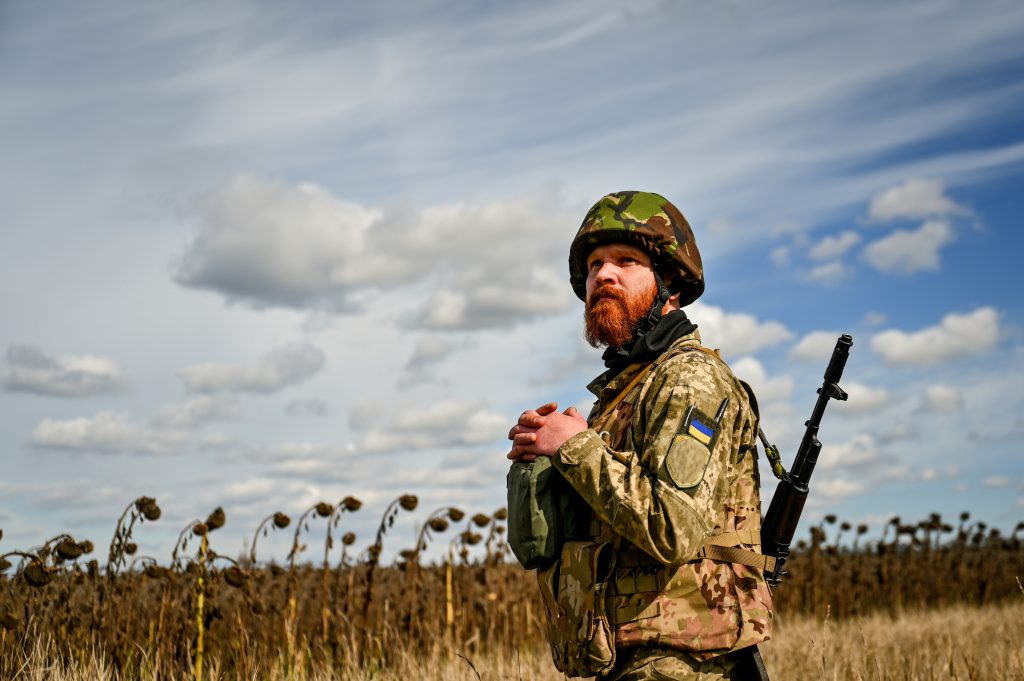
The situation at the Zaporizhzhia Nuclear Power Plant, which has been occupied by Russian soldiers since March 2022, remains complicated. The Russian invaders are struggling to provide enough personnel at the plant, as Ukrainians don’t want to cooperate with them.
The occupiers have also been abducting people since the start of the war, the mayor said. Ivan Samoidiuk, the first deputy mayor of Enerhodar, was seized by Russian forces on March 19. After 333 days of captivity, he was returned to Ukraine. According to Orlov, approximately 1,000 residents of Enerhodar have been tortured by the occupiers.
The main priority for this year, Orlov said, is to liberate the city from the Russians and then restore its services. He also hopes law enforcement agencies will work to bring collaborators to justice, so local residents, who have seen crimes and atrocities committed by Russian forces and their supporters, don’t resort to lynchings.
Europe’s Edge is CEPA’s online journal covering critical topics on the foreign policy docket across Europe and North America. All opinions are those of the author and do not necessarily represent the position or views of the institutions they represent or the Center for European Policy Analysis.

